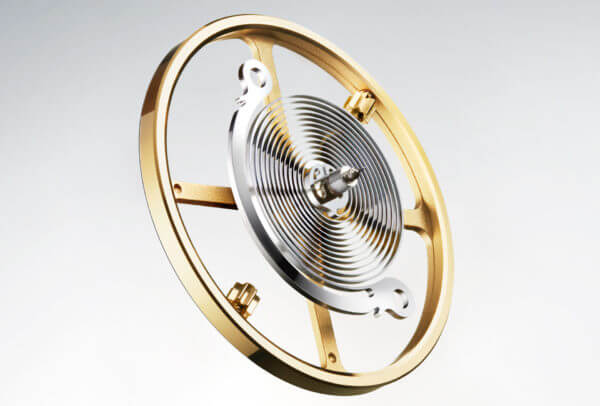Baume & Mercier sent a little wave of excitement through this year’s Salon International de la Haute Horlogerie in January with the unveiling of its first in-house calibre, produced in collaboration with Valfleurier and Richemont’s research and innovation centre in Neuchâtel. The Baumatic is a five-day movement that keeps a stable rate throughout its power reserve, withstands magnetic fields of 1,500 gauss (25 times the norm) and offers service intervals of at least five years. It’s a reliable calibre to say the least, which, true to form, Baume & Mercier has incorporated into its Clifton range at a starting price of £2,300 / $2,750; the entry-level for a luxury watch. The Baumatic’s remarkable performance owes much to research into tribology, i.e. the interactions between components, which includes the silicon components in the Baumatic’s regulating organ and escapement. But just as the first Clifton Baumatics are hitting stores, Swiss daily Neue Zürcher Zeitung has reported a possible dispute over patent infringement between Baume & Mercier and one of the brands in a consortium previously formed by Patek Philippe, Rolex and Swatch Group. Polemics aside, it’s interesting to note that the disputed part is apparently one of these silicon components – confirmation that this material, once unheard-of in watchmaking, now plays a highly strategic role.

Ulysse Nardin leads the way
A brief reminder of how silicon made its way into watch movements has to begin with Ulysse Nardin. When in 2001 the brand presented the Freak, it equipped this groundbreaking watch with a suitably revolutionary calibre, both in construction and materials as this was the first movement to incorporate silicon. Shortly after, Ulysse Nardin set up Sigatec to further its lead in this new technology. When the competition finally got over the shock, it did so in the form of a consortium whose members, Patek Philippe, Rolex and Swatch Group, set out to explore silicon’s potential with the help of the Centre Suisse d’Electronique et de Microtechnique. After all, what’s not to like in silicon? Hard and light, it is unaffected by magnetic fields or variations in temperature, has very low friction and therefore needs little to no lubricant, and can be cut with remarkable precision using deep reactive ion etching (DRIE). And so it was that in 2005, Patek Philippe introduced the Spiromax balance spring in monocrystalline silicon. A year later, Breguet announced its silicon escapement and, in 2010, a silicon balance spring. Other Swatch Group brands followed suit, including Blancpain, Omega and, more recently, Tissot and Mido. Last of the three, Rolex took the leap in 2014 with the Syloxi balance spring in the Calibre 2236 that equipped the Oyster Perpetual Datejust Pearlmaster 34.
Silicon has become an integral part of Haute Horlogerie movements, and even opens up new perspectives.
For or against?
This list, which could go on, shows the extent to which silicon has become an integral part of Haute Horlogerie movements. It also opens up new perspectives, illustrated by Girard-Perregaux’s constant escapement that would never have seen daylight otherwise. The first “adventures in silicon”, in the early 2000s, were part of a drive to become less dependent on Nivarox (Swatch Group) and its metal balance springs. Since then, the proliferation of silicon parts has sparked something of a standoff between ancients and moderns. For the guardians of tradition, there is no room inside a movement for materials which cannot be repaired, whose properties cannot be guaranteed over the long term, and which undermine the belief that a movement must always be adjusted by a watchmaker. Whatever your view, silicon components have never been higher on movement constructors’ agenda, irrespective of brand. The patents which the aforementioned consortium filed for a balance spring, which run until 2020 to 2022 depending on the country, leave no doubt about the importance of silicon and its weight in the watch industry today.

















